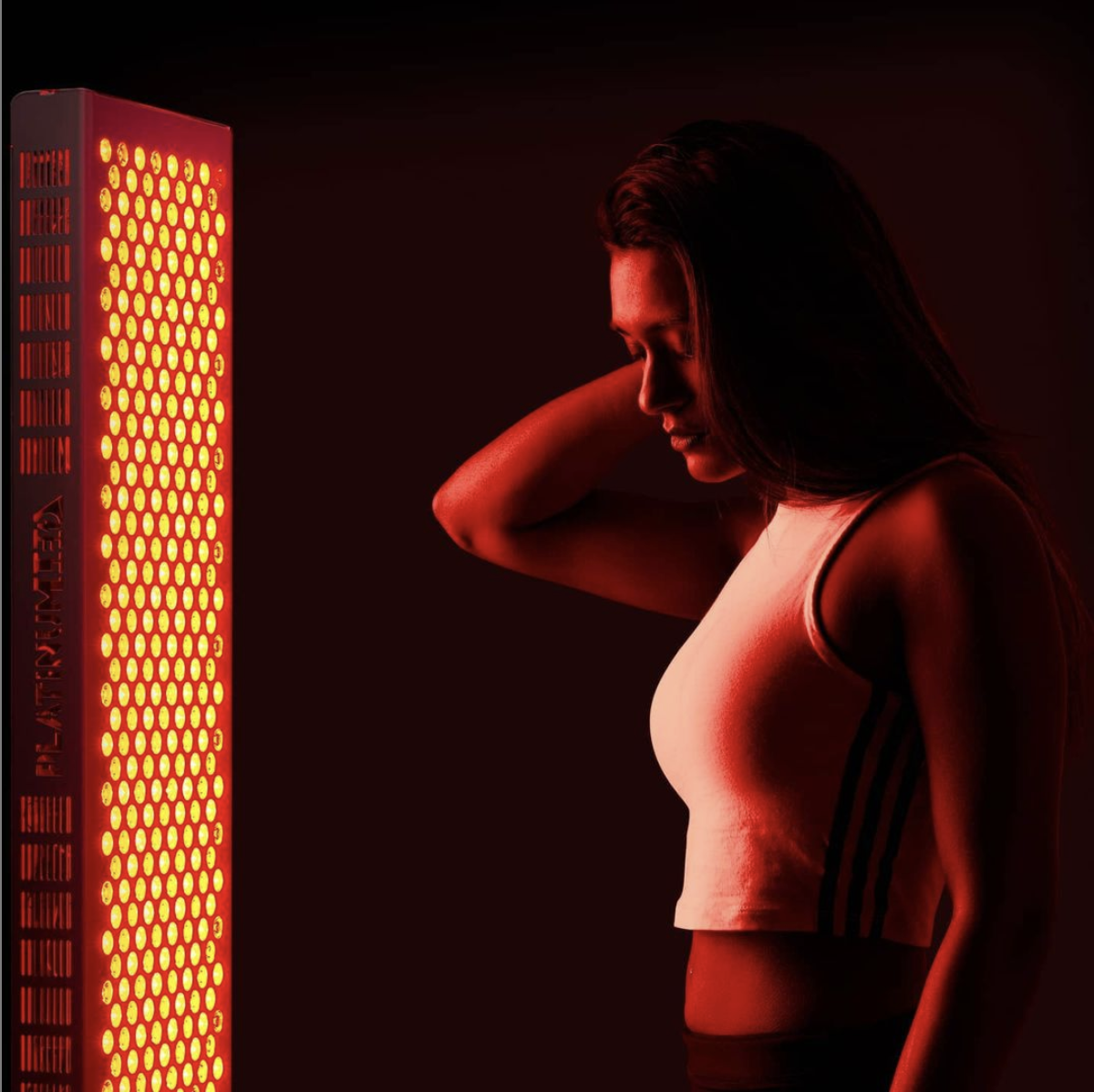
LED Light Therapy
Red light therapy (RLT) can be very useful as part of an overall wellness and longevity protocol. The red light is believed to work by producing a biochemical effect at the cellular level within the mitochondria. By increasing mitochondrial function with RLT, more energy is produced which leads to cellular rejuvenation and repair of tissue damage. This type of light therapy is very synergistic when done in combination with NAD+ IV therapy.
There is ongoing clinical research into the efficacy of light therapy but there is current evidence to suggest that it may have the following benefits:
Reduces inflammation in muscle and joints
Stimulates wound healing
May help relieve pain and stiffness related to arthritis
May help build collagen
PlatinumLED Therapy Lights: Biomax Series
R+ | NIR+ spectral output provides multi-wavelength Red and NIR output for the most optimal spectrum possible. Superior irradiance levels yield the strongest output for any LED therapy light on the market.
Reduces fine lines and wrinkles - Stimulates ATP production in cells. Promotes growth of new capillaries. Boost production of collagen and fibroblasts. In a study, the 630nm wavelength was combined with other beauty treatments such as micro needling to create statistically significant improvement in photodamage, fine lines and sagging.
Improvement in skin disorders such as psoriasis
Hair regrowth - red light therapy containing the 630 nm wavelength has been proven to be safe and effective method of stimulating hair growth in both men and women
Healing of superficial skin cancers: Wavelengths of 630nm have been shown to help in the treatment of non melanoma skin cancers
The treatments of acne - the 630nm wavelength has also been shown the help reduce inflammation and breakouts
Light Therapy
Light that Heals
When comparing red light therapy vs. infrared saunas, it’s important to remember that red light therapy employs light, while infrared saunas employ heat. Both technologies deliver therapeutic benefits, but they do so in ways that are completely different to one another—yet also potentially complementary, as we will see later.
Red light therapy is the process of targeting the body with specific near-infrared and red light wavelengths that are recognized for their unique therapeutic and regenerative results. Also called photobiomodulation (PBM), this kind of therapy is applied via medical grade LED light panels that produce truly powerful bands of light during frequent or daily sessions of 10 to 15 minutes.
The set-up alone makes for an all together different experience to infrared saunas. There is no heat involved with red light therapy. The LED lights themselves don’t get hot, and users don’t break into a sweat or experience elevated heart rates, as happens in infrared or traditional saunas.
You might be wondering: What is it about red light therapy that’s so magical? The answer has to do with the efficacy and quality of the wavelengths that are being directed at the body.



